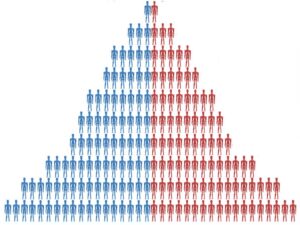© Reuters. Deciphering the Fed’s QT Tapering Timeline: Wall Street’s Mixed Predictions
Quiver Quantitative – Wall Street strategists are closely monitoring the Federal Reserve’s plans for quantitative tightening (QT) as policymakers prepare to discuss the central bank’s balance sheet next week. A key point of contention is the timing of when the Fed might start tapering its balance sheet reduction. Opinions vary, with some expecting an announcement as early as May, while others forecast a later start in the second half of the year. The debate stems from multiple factors, such as the status of the reverse repurchase agreement facility and potential funding strains due to a scarcity of bank reserves. The decision to slow QT, as Dallas Fed President Lorie Logan (TLT) noted, doesn’t mean an outright halt but a reduction in the pace of balance sheet shrinking.
Central to this debate is the question of how and when to adjust the reinvestment cap for the Fed’s Treasury holdings, with consensus pointing towards a decrease from $60 billion to $30 billion per month. Strategists from Deutsche Bank (DB) and RBC Capital Markets (RBC) predict a tapering start around July, while others like Barclays and TD Securities expect a slower runoff before a complete halt. This divergence in views reflects the complex dynamics influencing the Fed’s decision-making, including the need to balance economic stability with inflation control.
Market Overview:
-Divergent Views on QT Taper Timing: Forecasts range from a May kickoff to a July or even September start, highlighting the uncertainty surrounding the Fed’s decision.
-Key Variables in Play: Depletion of the reverse repo facility (RRP) and potential bank reserve scarcity are crucial factors influencing the Fed’s approach.
-Focus on Measured Slowdown: Most strategists anticipate a reduction in the reinvestment cap for Treasuries, suggesting a gradual tapering process.
-Debate Over Duration: Opinions vary on the length of the taper, with estimates ranging from a few months to potentially extending through next year.
Key Points:
-Wall Street Divided on Timing: Strategists offer a range of forecasts for the Fed’s QT taper initiation, spanning from May to September.
-RRP and Reserve Levels Critical: The pace of RRP drainage and potential bank reserve scarcity will significantly impact the Fed’s tapering strategy.
-Gradual Slowdown Expected: A reduction in the Treasury reinvestment cap is the most likely approach for tapering QT.
-Duration of Taper Uncertain: Estimates vary on the length of the QT taper, with possibilities ranging from a few months to next year.
Looking Ahead:
-The Fed’s upcoming meeting will be closely watched for any indications on the timing and pace of QT tapering.
-The evolution of the RRP facility and overall liquidity conditions will be critical factors in determining the Fed’s ultimate decision.
-Strategists warn of potential risks associated with a later taper start, underscoring the need for careful Fed navigation.
Strategists from various financial institutions, including Bank of America (BAC), Barclays (BCS), CreditSights, and Goldman Sachs (GS), offer differing perspectives on the likely course of action. They are considering factors such as the depletion rate of the reverse repo facility, the current economic environment, and the impact of QT on short-term funding markets. The collective analysis points towards a gradual approach to tapering QT, with the Federal Reserve being cautious to avoid a repeat of the repo rate spike experienced in 2019. Additionally, the ongoing debate over QT’s impact on liquidity and market conditions emphasizes the nuanced challenge the Fed faces in managing its balance sheet.
As the Fed approaches its next meeting, the decision on QT tapering will be pivotal in shaping the financial markets’ trajectory. The consensus among Wall Street strategists seems to lean towards a careful, measured approach to reducing the Fed’s balance sheet, reflective of the delicate economic environment and the lessons learned from past policy actions. The tapering of QT, whenever it starts, will be a critical indicator of the Fed’s broader monetary policy direction in the coming months.
This article was originally published on Quiver Quantitative
Read the full article here












